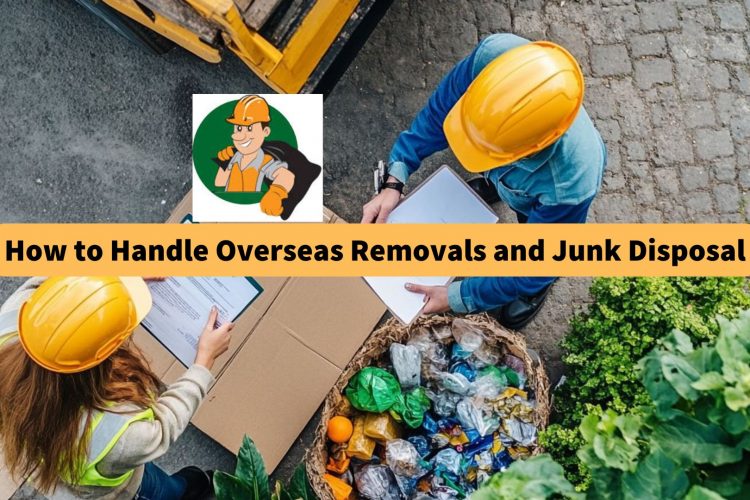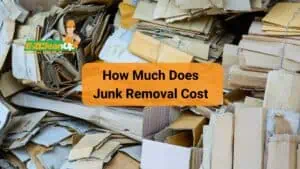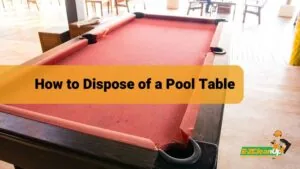Moving overseas can be stressful, especially when managing unwanted items. This guide covers how to sort, dispose of, or donate junk before the move. You’ll also learn how to pack, ship, and handle leftover items to make the process easier so you’ll have a smooth transition to your new home.
To get more ideas about how to handle overseas removals and junk disposal, you can continue reading this article for a hassle-free relocation.
Prepare a Plan for You Move and Create a Checklist
A well-structured checklist helps you stay organized and keeps track of important tasks. Here’s how you can make your move much easier:
Establish a Timeline and Create Manageable Steps
Creating a timeline for your move is a great way to keep everything on track. You can start by setting a moving date and then break down the process into manageable steps, such as sorting belongings, hiring movers, and packing.
This approach not only helps you stay organized but also allows you to tackle each task without feeling overwhelmed.
Research About Removal Companies
Opting for removal companies is also a great option to make your move less challenging.
For instance, when considering furniture removals to New Zealand, it’s essential to choose a service that offers door-to-door assistance. These types of services typically include free home or video surveys, shared or full container shipping options, expert guidance on customs requirements, and dedicated move managers.
Many companies can also provide tailored shipment protection policies, automated notifications, and storage solutions if needed–all while maintaining competitive pricing without sacrificing quality.
Decide What to Take With You
Deciding what to take when moving overseas requires planning. Here’s how to simplify the process:
- Assess Needs – Consider the climate and culture of your new home to prioritize essentials like clothing and personal items.
- Pack Valuables – Focus on sentimental or irreplaceable items.
- Weigh Costs – Compare shipping costs to the expense of buying items abroad.
- Check Electronics – Check compatibility with local voltage and plug types.
- Decide on Furniture – Determine if transporting large furniture is practical or if selling and buying new is better.
- Understand Customs Rules – Research regulations to avoid issues.
- Minimize Duplicates – Take only what you truly need.
- Digitize Documents – Save space by scanning important papers.
Decide That to Sort, Donate, and Dispose
Sorting, donating, and disposing of items is key when moving. You can check and evaluate each item’s condition, use, and sentimental value.
Moreover, donate usable items to charities and dispose of damaged ones following local guidelines. This process can help lessen your load and create an organized new home.
Research About Your Preferred Shipping Method
When researching your preferred shipping method for an overseas move, it’s important to evaluate the available options carefully.
The primary methods include Full Container Load (FCL), which is ideal for large shipments filling a container, and Less than Container Load (LCL), suitable for smaller loads sharing container space with other shipments.
Air freight is the fastest option, which is perfect for urgent deliveries but comes at a higher cost. Each method has its advantages in terms of speed, cost, and capacity, so consider your specific needs and budget to make an informed decision.
Tips During Packing and Shipping
When packing for an international move, use the right materials to protect your belongings:
- Boxes – Sturdy cardboard boxes, especially the specialty ones for fragile items.
- Cushioning – Bubble wrap, packing paper, and packing peanuts for delicate objects.
- Sealing – Heavy-duty tape to secure boxes.
- Eco-Friendly Options – Recycled materials to reduce waste.
- Organization – Ziplock bags for small items and plastic wrap for furniture.
What You Should Do With Leftover Junk After Your Move?
After your move, dealing with leftover junk can be a not-so-easy task. Opting for a junk removal service is an efficient way to clear out unwanted items quickly.
These companies can offer you convenient services–where you simply point to the items you want removed, and their team handles the heavy lifting.
These services can take a variety of items–including old furniture and appliances–and often include eco-friendly disposal options. Additionally, some companies provide the option to donate usable items to local charities, so that your unwanted belongings can still benefit others.
Hiring professionals not only saves time but also helps you comply with local disposal regulations, which makes the process smoother and more responsible.
Arriving at Your New Home
Once you arrive at your new home, you can start by thoroughly cleaning the space to create a fresh environment before unpacking.
Next, check that all appliances and utilities are working properly, and document any existing damages during a walkthrough. You can also prepare an “open first” box with essentials like toiletries and bedding to make your first night comfortable.
Finally, take some time to explore the neighborhood and familiarize yourself with local amenities to help you settle in more easily.
FAQs
How do I handle my pets during an overseas move?
Research your destination’s pet import regulations early, and consult a veterinarian to guarantee your pet’s health and safety during travel.
How can I save money on shipping costs?
Downsize by getting rid of items you don’t need, consider shared shipping options and compare quotes from different moving companies to find the best deal.
How do I handle temporary storage needs when moving abroad?
Look for storage options either in your current country or in your new location, and choose one based on duration, cost, and security features.
What should I know about setting up utilities in my new home?
Contact local utility providers ahead of time to schedule service activation, and check if you need to set up accounts or provide proof of residence.
The Bottom Line – Mastering Your Overseas Move
Successfully managing an overseas move usually involves careful planning, organization, and decision-making. From researching removal companies and sorting your belongings to dealing with leftover junk, each step plays a vital role in creating a smooth transition to your new home.
By following these guidelines, you can minimize stress and create a positive moving experience, which can allow you to focus on settling into your new environment.













